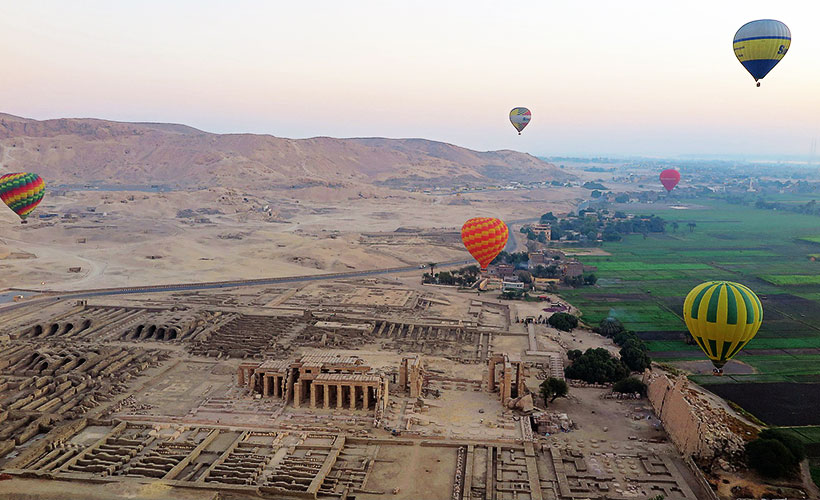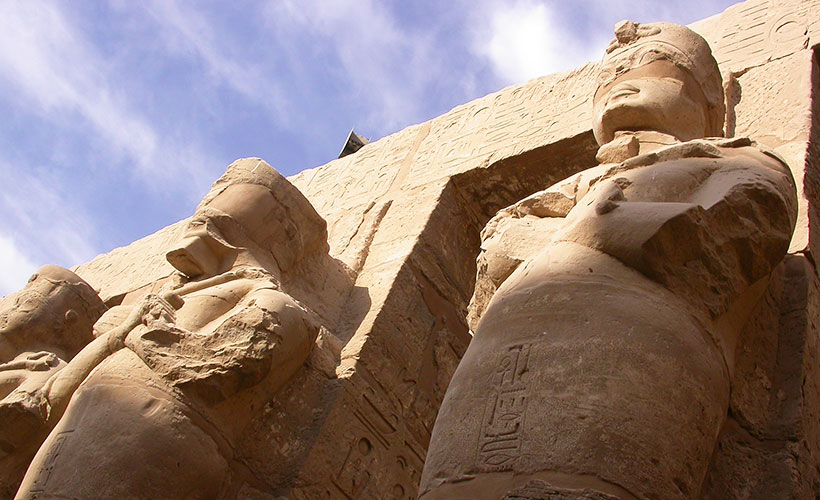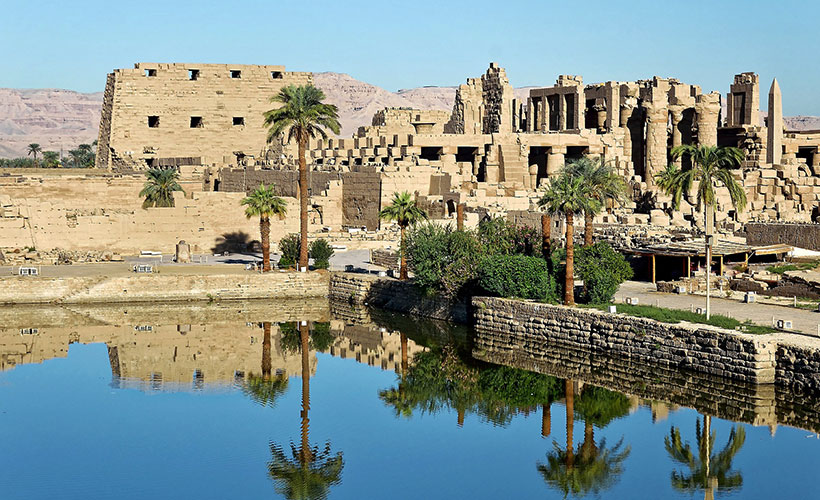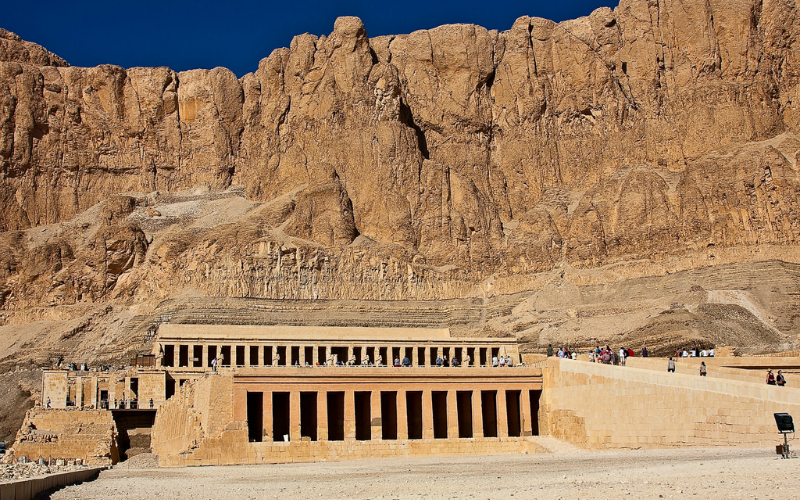
Luxor in Egypt is often referred to as the world’s largest open-air museum with its massive collection of ancient temples and monuments. Situated 500 kilometres south of Cairo, Luxor is built on top of an ancient city that the Greeks called Thebes, and was known as Waset by ancient Egyptians.
In ancient times, the city was considered a religious site, and the home of the god Amun. Many Egyptian queens believed that Amun fathered their children, and at the height of ancient Egyptian civilisation, Amun was even considered ‘King of the Gods’.
The city of Luxor is not only a modern city but also a religious site and home to the world’s largest open-air museum. It is easy to get lost in history walking around the fascinating sites while imagining the life of ancient Egyptians. Plus, who doesn’t want to see an ancient statue or two?
Exploring the royal tombs
The Colossi of Memnon are two seated statues, facing the Nile river, representing Amenhotep III. The statues are each carved from a single block of sandstone and were placed there as guardians of Amenhotep III’s mortuary complex. Today, little of the complex is still there, partly due to earthquakes and floods, but also due to the use of the material for ‘newer’ structures. In ancient times, one of the statues began making noises which were thought to be prophecies, making the site legendary.

Most of the pharaohs of the New Kingdom were entombed in the Valley of the Kings that’s located near the riverbanks and surrounded by steep cliffs. The pharaohs were entombed along with all the things that they wanted to take with them into the afterlife – from jewellery and clothes to food and drink. There are about 60 tombs and perhaps the most well-known among them is that of King Tutankhamun.
Close to the Valley of the Kings is what’s now known as the Valley of the Queens. Ancient Egyptians knew this site as Ta Set Neferu – the Valley of the Royal Children. The Valley of the Queens holds around 75 tombs of princes, princesses, court dignitaries, and queens, including the tomb of Nefertari, the wife of Ramesses II. Only four of these tombs are open to the public, and this includes the tomb of Nefertari, where beautiful paintings cover the walls.
Between the Valley of the Kings and the Valley of the Queens is the village of Deir el-Medina, called Set Maat (the place of truth) by ancient Egyptians. Civil servants, stonecutters, draftsmen, and artists who worked on the tombs of the kings and queens lived in this village, surrounded by barren hillsides.
Palaces of worship
The Karnak Temple Complex was known as Ipet-Isut in ancient Egypt. It means the ‘Chosen of Places’, and was the main place of worship for 18th dynasty Thebans. The complex has many sanctuaries, kiosks, pylons, and obelisks with the entrance guarded by row upon row of sphinxes.

Luxor Temple is located on the banks of the Nile, in the middle of the city. The entrance of Luxor Temple is guarded by a red granite obelisk and two seated statues of Ramesses II. Perhaps one of the most striking structures at the Luxor Temple is a colonnade of columns that are decorated with hieroglyphic reliefs.
While these sites may stand in ruin, they cover large areas and are still impressive to see. A visit here is no doubt a wonderful way to learn about the fascinating and rich history of an era gone by.


